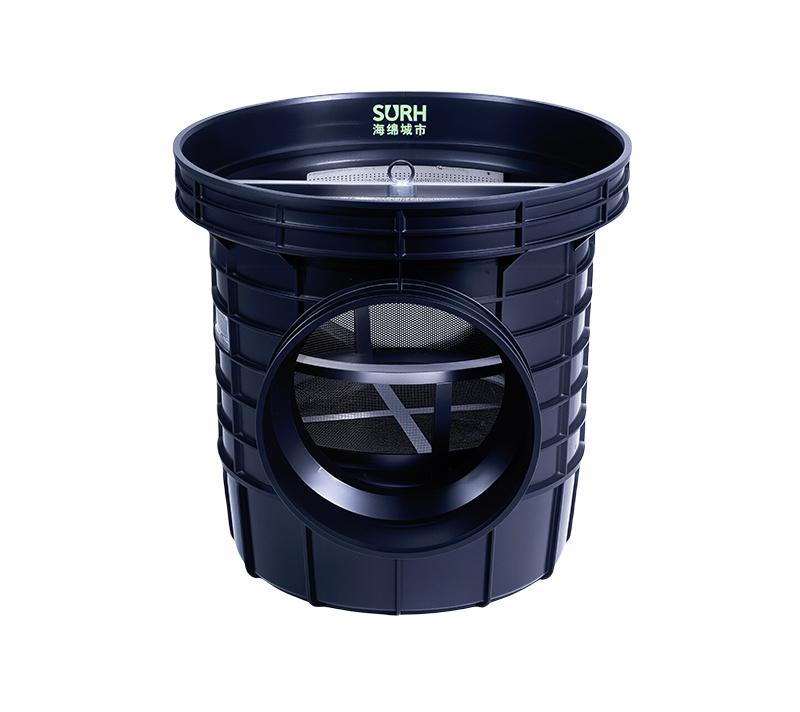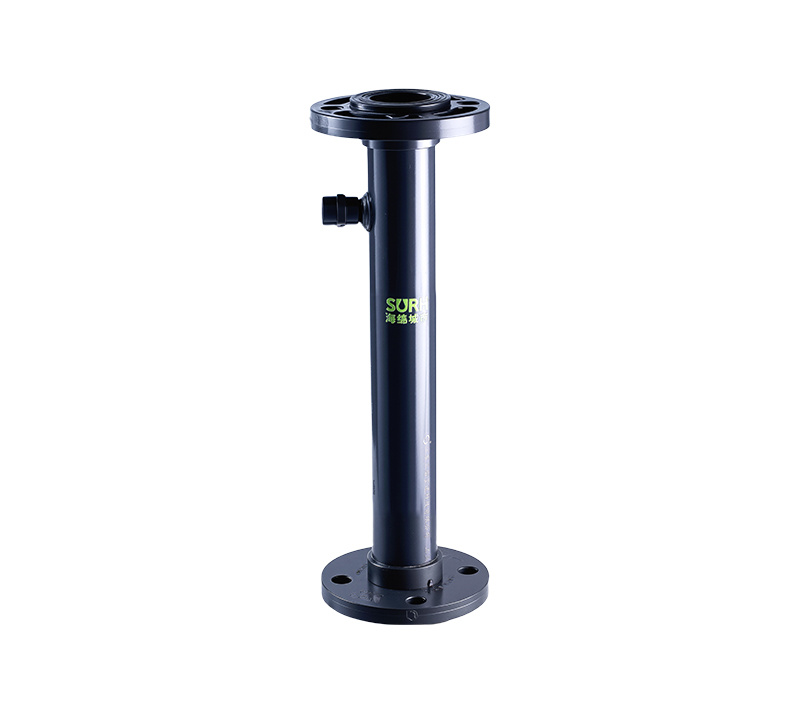
Introduction to Ultraviolet Disinfection:
The ultraviolet sterilization waveband is mainly between 200-300nm, with the 253.7nm wavelength having the strongest sterilization ability. When various bacteria and viruses in water or air pass through the ultraviolet (253.7nm wavelength) irradiation area, the ultraviolet rays penetrate the cell membrane and nucleus of the microorganisms, destroying the molecular bonds of nucleic acids (DNA or RNA), causing them to lose their ability to replicate or become inactive and die, thereby killing all bacteria and viruses in the water or air without the use of any chemical drugs. Ultraviolet disinfection and sterilization technology is the latest generation of disinfection technology that emerged internationally in the late 1990s.
Five major advantages:
1. High-efficiency sterilization:
Ultraviolet sterilization of bacteria and viruses can generally achieve a sterilization rate of 99%-99.9% in one to two seconds.
2. High-efficiency broad-spectrum sterilization:
Ultraviolet sterilization has the highest broad-spectrum. It can efficiently kill almost all bacteria and viruses.
3. No secondary pollution:
Ultraviolet sterilization does not add any chemical agents, so it will not cause secondary pollution to the water body and the surrounding environment. It does not change any components in the water.
4. Safe and reliable operation:
Traditional disinfection technologies such as chloride or ozone use disinfectants that are highly toxic and flammable. Ultraviolet disinfection systems do not have such safety hazards.
5. Low operating and maintenance costs of this machine:
Ultraviolet sterilization equipment occupies a small area and requires simple structures, so the total investment is small. The operating cost is also low. At the level of 1,000 tons of water treatment, its cost is only 1/2 of that of chlorine disinfection.
UV Series - Ultraviolet Sterilizer Principle:
The ultraviolet sterilizer integrates optics, microbiology, mechanics, chemistry, electronics, fluid mechanics and other comprehensive sciences. It uses a specially designed high-efficiency, high-intensity, and long-life ultraviolet C light generating device to irradiate flowing water with strong ultraviolet C light. When bacteria, viruses, etc. in the water are irradiated with a certain dose of ultraviolet C light (wavelength 253.7nm), their cell DNA and structure are destroyed, and cell regeneration cannot proceed, thereby achieving water disinfection and purification. The 185nm spectral line can also decompose organic molecules in the water, generate hydrogen radicals, and oxidize organic molecules in the water into carbon dioxide, thereby achieving the purpose of removing TOC.
UV Series - Introduction to Ultraviolet Sterilizer:
The UV series ultraviolet sterilizer device produced by our company uses the world's leading high-intensity odorless ultraviolet sterilization lamp. The inner wall of the cylinder is made of specially treated food-grade 304 stainless steel, so that the pre-treated water is irradiated with sufficient 253.7nm ultraviolet rays when flowing through the cylinder, which has a good sterilization effect. Because it does not change the physical and chemical properties of water, it is an indispensable and ideal equipment for producing pure water and high-purity water in the electronics, pharmaceutical, food, chemical, beverage, and cosmetics industries.
This device is horizontal, with fast sterilization speed, high efficiency, and good effect. After being irradiated for 10 seconds according to water treatment requirements, it can kill viruses and bacteria in the water, with a sterilization rate of 99.99%.
The physical and chemical properties of the water will not be changed after irradiation, nor will it cause pollution. It is simple to operate and easy to use. There are different flow-type products for users to choose from. You only need to replace the ultraviolet sterilization lamp and clean the quartz sleeve regularly.
This equipment has the advantages of small size, light weight, low power consumption, long life, and low cost. Compared with other sterilization methods, it has significant advantages, so it is widely used.
This equipment is composed of ultraviolet lamp, quartz tube, ballast, sealing parts, tank body, water inlet and outlet, etc.
UV Series - Features of Ultraviolet Sterilizer Equipment:
1. Select high-efficiency UV-C (LL or LH) ultraviolet lamps
The UV ultraviolet sterilizer uses high-quality low-pressure high-intensity ultraviolet lamps, and the service life of the lamps is guaranteed to be more than 9000 hours.
2. Select high-transmittance and high-purity quartz sleeves to ensure that the ultraviolet transmittance is above 90%.
3. Select the world's advanced constant and high-intensity ultraviolet special ballast to ensure the normal operation of the entire system under complex conditions.
4. Select high-quality stainless steel as the reactor (304 material), and the inner wall of the reactor is specially polished to improve the sterilization effect.
5. The equipment is designed with reference to the American NSF TITLE 55 standard, and its effective dose is more than 99.9%.
UV Series - Water inlet requirements for ultraviolet sterilizer:
| Water hardness | <450mg/l |
| Total iron content | <0.3ppm(0.3mg/I) |
| Sulfide | <0.02ppm(0.02mg/I) |
| Total suspended solids | <10ppm(10mg/I) |
| Manganese content | <0.1ppm(0.1mg/I) |
| Turbidity | <5NTU |
| Colorless | <15 degrees |
| Ph value | 6.5-8.5 |
| Water temperature | 5℃-60℃ |
UV Series - Working technical parameters of ultraviolet sterilizer:
| Equipment model | RZ-UVZ-LS10 |
| Equipment power | 180W |
| Equipment inlet and outlet diameter | DN50 |
| Equipment test pressure | 0.6MPA |
| Equipment pressure bearing | 0.6-0.8MPA |
| Device Dimensions | 900mm×108mm |
| Rated Voltage | AC 220V±5% |
| Frequency | 50HZ |
Equipment installation and operation procedures:
1、Installation and operation procedures:
This device is installed horizontally indoors. Fix the bracket to the specified base or workbench. (Connect the water inlet and outlet). The location of the sterilizer indoors should not only consider the convenience of water supply and drainage and meet the requirements of the process flow, but also pay attention to leaving installation space to extract the ultraviolet lamp tube and space. The electric control box is installed near the device. The ambient relative humidity is no greater than 80℃, no corrosive gas, no conductive dust, no strong vibration and impact.
2、Installation:
This product is a pipeline type. Either of the two spouts can be selected as the water inlet and one as the water outlet according to the pipeline direction. It can be placed horizontally or vertically according to user needs. In order to facilitate the replacement of the lamp tube and quartz tube, a space of 1.2m should be left on one side. After the product is installed, first conduct a water test to ensure no water leakage, then turn on the power. After confirming that the lamp is on for 3-5 minutes, first turn on the water outlet valve, then turn on the water inlet valve, and then the machine starts to run.
3、Maintenance:
Disassembly of quartz tube:
First turn off the power, open the protective covers on both sides of the sterilizer, take out the lamp tube, remove the end caps, take out the “O” ring in the water seal seat, and then slowly pull out the quartz tube.
Assembly of quartz tube:
The operator should not directly touch the surface of the quartz tube with his hands to avoid soiling it and affecting the transparency. Align the quartz tube with the water seal holes at both ends, insert the quartz tube, the remaining amount at both ends should be equal, put on the “O” ring, and slowly and evenly tighten the end cap. The force should not be too great to avoid cracking the quartz tube, and then perform a water test. If there is water leakage, you can gently tighten the end cap again until there is no water leakage, and finally install the lamp tube to run.
Precautions:
1. Check that there is no water leakage at both ends before running water, and there should be no water droplets on the inner wall of the quartz tube.
2. The lamp socket should be inserted according to the number or color.
3. Grounding protection.
4. Avoid direct ultraviolet radiation to the human body.
5. Do not install the sterilizer in places that are too humid or subject to large shocks and vibrations. High humidity can easily cause damage to electrical components, and excessive shocks and vibrations can cause damage to the lamp tube and quartz tube.
6. Clean the quartz tube regularly. Use alcohol as the cleaning solution when cleaning.
Common faults and solutions:
| Fault | Cause | Troubleshooting method |
| Water leakage at the end of the quartz tube | 1. Quartz tube rupture 2. End cap not tightened 3. Gasket damage | 1. Replace the quartz tube 2. Tighten the end cap screws evenly until there is no leakage Stop the water, do not tighten it too tightly 3. Replace the gasket |
| Low sterilization efficiency | 1. Low voltage 2. Adhesion on the outer wall of the quartz tube 3. The radiation intensity of the lamp tube is less than 70U 4. The normal service time of the lamp tube has been reached 5. Exceeding the rated flow 6. Impurities, minerals, and suspended Excessive floating matter | 1. Adjust the voltage 2. Clean the quartz tube 3. Replace the lamp tube 4. Replace the lamp tube 5. Adjust the flow or increase the equipment 6. Add a filter device or increase the equipment |
| The lamp tube is not lit | 1. The fuse is blown 2. The lamp holder is not plugged in firmly 3. The internal insert of the socket is detached 4. Whether the ballast is damaged 5. Whether the light-emitting diode is damaged 6. Whether the electric bridge is broken 7. Lamp tube damage | 1. Replace the fuse 2. Plug in the socket firmly 3. If the insert is unsoldered, solder it firmly or Replace the socket 4. If damage is found, it must be replaced 5. Replace the lamp tube |
Keywords:
Rainwater deep treatment
Rainwater storage
Rainwater pretreatment
Central Control System
Chip
Accessories






